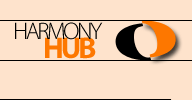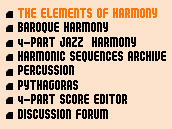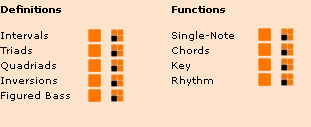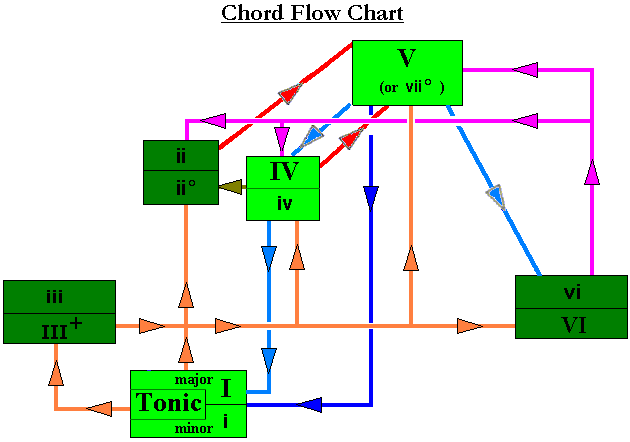




Chord Flow
The idea behind all Western music is to create tension and release through the alternation of Tonic
function (I, iii, vi) and Dominant function (V, vii) chords. Triads or Quadriads built on degrees V and VII
contain the scale note (the "leading tone") one half-step below the root of the Tonic chord I
[see Chords (basic)], and therefore set up the highest possible degree of tension with I.
The iii chord also contains the leading tone, but is best considered as a V chord with a suspended 6th
which then resolves down to form a full V chord.
The IV chord contains a note one half-step above the 3rd of I, but also contain the root of I. For this
reason the tension it creates with I is not as great as that of the Dominant function chords. As an alternative
to resolving IV to I (called a "plagal cadence"), we may chose to increase the tension further, by changing
the notes of IV to those of V, and then follow with a strong resolution to I (called a "perfect cadence").
Harmonic progressions are composed by stringing together chord functions while giving a balanced sense
of tension-release. The Chord Flow Chart below shows the available directions at each step of the way.
Almost all routes are open at any junction, except:
ii![]() IV/iv and vi/VI
IV/iv and vi/VI ![]() I which provide too weak a release in tension.
I which provide too weak a release in tension.
ii ![]() I which is almost impossible to resolve without creating similar motion in the voice leading (similar
I which is almost impossible to resolve without creating similar motion in the voice leading (similar
motion should always be avoided in good counterpoint).
V ![]() ii which is impossible since the leading note must rise to the Tonic.
ii which is impossible since the leading note must rise to the Tonic.
ii ![]() vi and IV
vi and IV ![]() vi which would sound like a modulation to vi.
vi which would sound like a modulation to vi.
ii ![]() VI would present difficulties since any note forming a diminished 5th must descend.
VI would present difficulties since any note forming a diminished 5th must descend.
Note that the chords for some functions can be major or minor, depending on the prevailing key.
Note also that the height of the boxes above the Tonic box represent the degree of tension away from
the Tonic.

The Elements of Harmony | Baroque Harmony | 4-Part Jazz Harmony | Harmonic Sequences Archive | Percussion | Pythagoras | 4-Part Score Editor | Discussion Forum